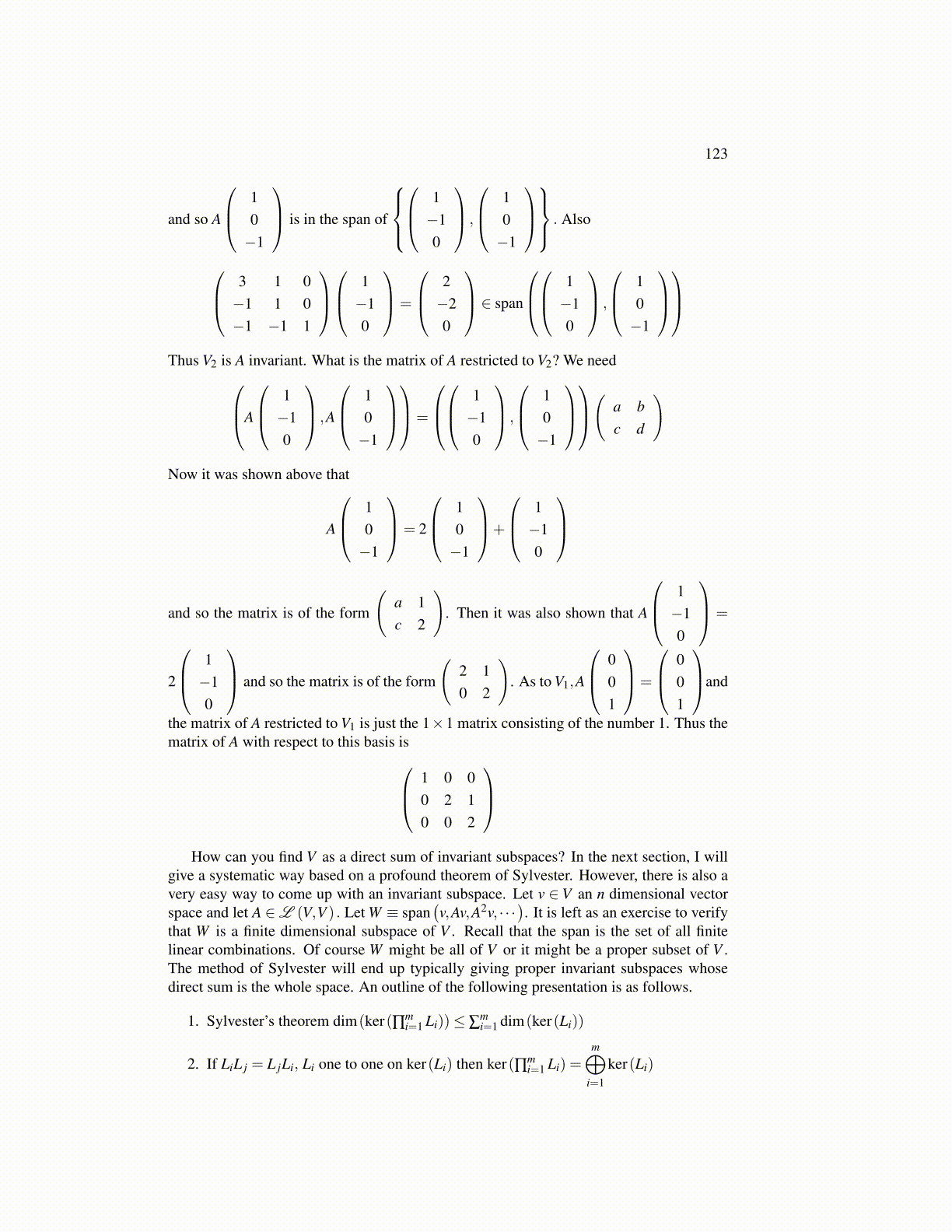
123
and so A
10−1
is in the span of
1−10
,
10−1
. Also
3 1 0−1 1 0−1 −1 1
1−10
=
2−20
∈ span
1−10
,
10−1
Thus V2 is A invariant. What is the matrix of A restricted to V2? We needA
1−10
,A
10−1
=
1−10
,
10−1
( a b
c d
)
Now it was shown above that
A
10−1
= 2
10−1
+
1−10
and so the matrix is of the form
(a 1c 2
). Then it was also shown that A
1−10
=
2
1−10
and so the matrix is of the form
(2 10 2
). As to V1,A
001
=
001
and
the matrix of A restricted to V1 is just the 1×1 matrix consisting of the number 1. Thus thematrix of A with respect to this basis is 1 0 0
0 2 10 0 2
How can you find V as a direct sum of invariant subspaces? In the next section, I will
give a systematic way based on a profound theorem of Sylvester. However, there is also avery easy way to come up with an invariant subspace. Let v ∈ V an n dimensional vectorspace and let A ∈L (V,V ) . Let W ≡ span
(v,Av,A2v, · · ·
). It is left as an exercise to verify
that W is a finite dimensional subspace of V . Recall that the span is the set of all finitelinear combinations. Of course W might be all of V or it might be a proper subset of V .The method of Sylvester will end up typically giving proper invariant subspaces whosedirect sum is the whole space. An outline of the following presentation is as follows.
1. Sylvester’s theorem dim(ker(∏mi=1 Li))≤ ∑
mi=1 dim(ker(Li))
2. If LiL j = L jLi, Li one to one on ker(Li) then ker(∏mi=1 Li) =
m⊕i=1
ker(Li)